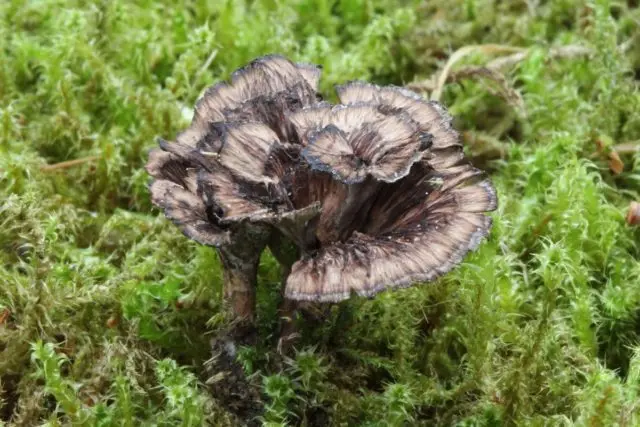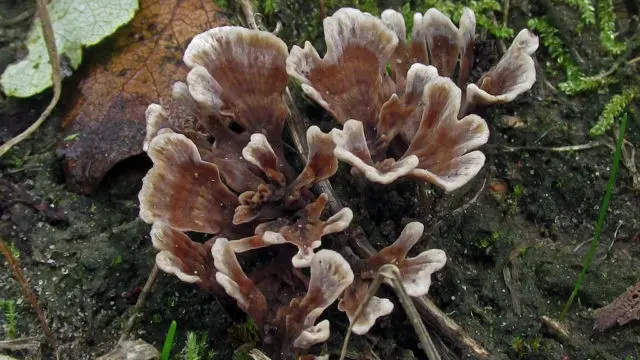Contents
Telephora clove – the mushroom got its name because of its pronounced similarity with a carnation flower. The white border around the edge of the hat looks especially impressive. This mushroom is able to decorate any forest glade.
What does a clove telephore look like?
The Latin name is Thelephora caryophyllea. The second word is translated as clove. Indeed, the appearance of the mushroom is very reminiscent of this flower, especially if it grows alone. It can also grow in a group, then it resembles a bouquet.
The sessile fruiting body of Telephora clove has brown flesh, rather thin in thickness. Spores are elongated, in the form of lobules. The reproductive organs (basidia) are club-shaped and produce 4 spores.
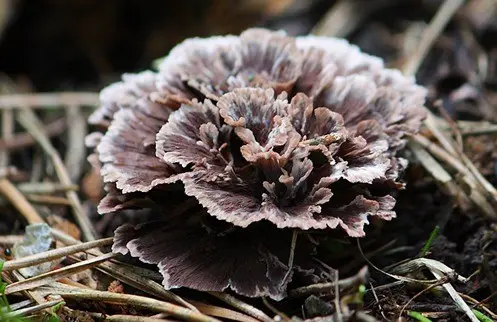
Cap Description
It reaches a diameter of up to 5 cm. The smooth surface is dotted with frequent veins. The edges of the cap are torn with a light stripe along the edge. In structure, it resembles a fringe rolled into a spiral from sharpening a pencil or a rosette. The color scheme varies with all shades of brown, including crimson. A dried hat loses color (brightens), spots appear.
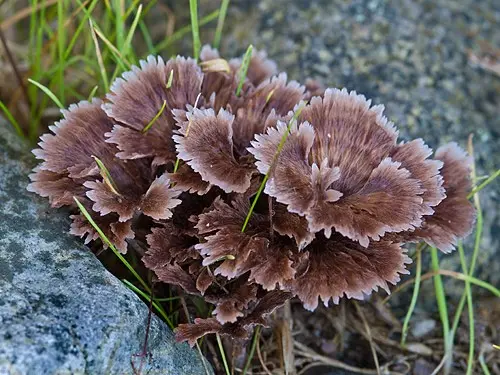
Description of the leg
The leg reaches a length of 2 cm, a diameter of up to 5 mm. It is covered with a white coating that disappears in adulthood. The surface is smooth, matte. The structure provides for the presence of several hats on the central leg.
Where and how to grow
Telephora clove can be found everywhere in coniferous forests throughout Eurasia. In Our Country, it is found from the Leningrad region to the foothills of the Tien Shan in Kazakhstan. The season starts in the middle of summer and lasts until late autumn, depending on the growing region.
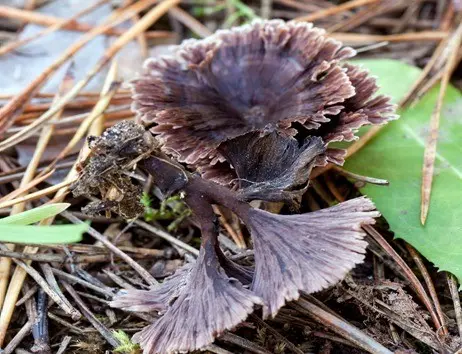
Is the mushroom edible or not?
Telephora clove mushroom is considered inedible. It has no pronounced smell and taste.
Twins and their differences
The Telefor family has a large number of species. The most similar are:
- Terrestrial telephora (Thelephora terrestris). The fruiting body consists of radially fused cap shells. Six-centimeter hats can fuse into one with a diameter of up to 12 cm. The surface is fibrous, with uneven edges. Has an earthy smell. Not used for food.

- Telephora digitata (Thelephora palmata). It has a bushy fruiting body, vaguely resembling a hand. Twigs-fingers are up to 6 cm long. It has the smell of cabbage waste. Differs in lighter and more delicate colors. Inedible.

- Telephora multipartitioned (Thelephora multipartita). The cap is more dissected into many lobes of unequal size. Growth occurs in two planes: vertical and horizontal. The wrinkled surface has a lighter color. Spore powder has a purple color. Inedible.

Conclusion
Clove telephora is a vivid example of the diversity of nature. The plant, which is a typical representative of the mushroom family, looks like a flower.











